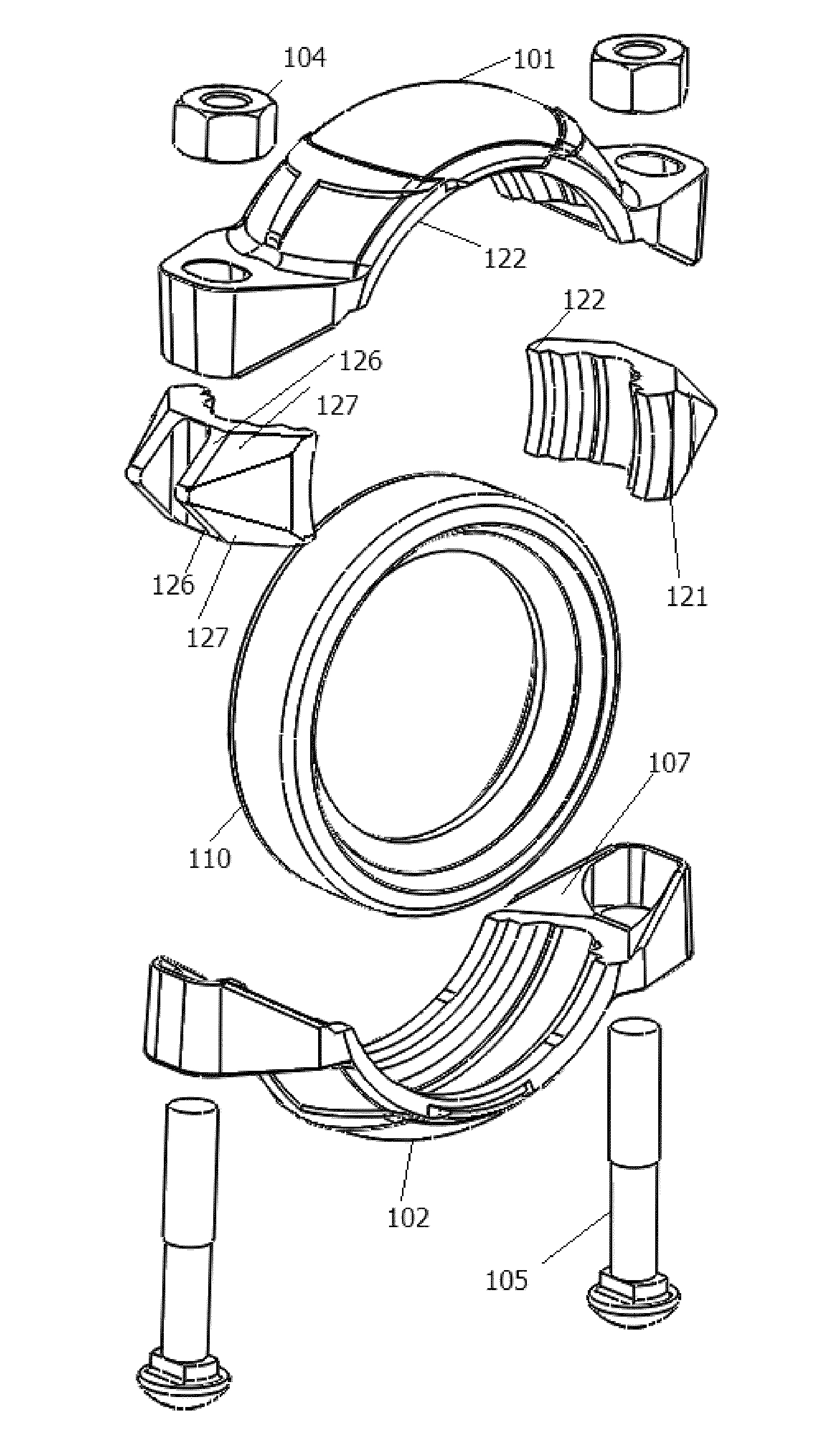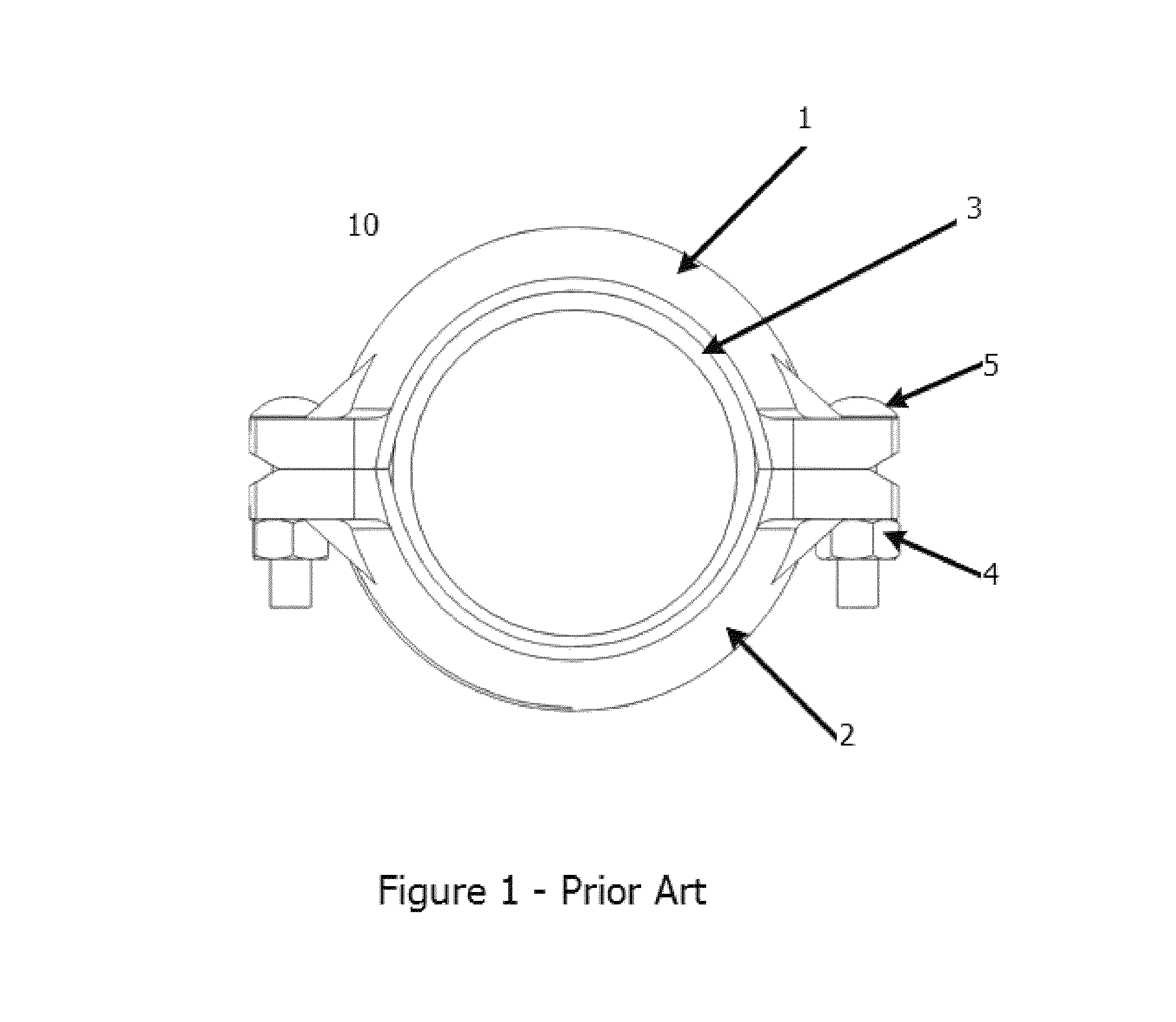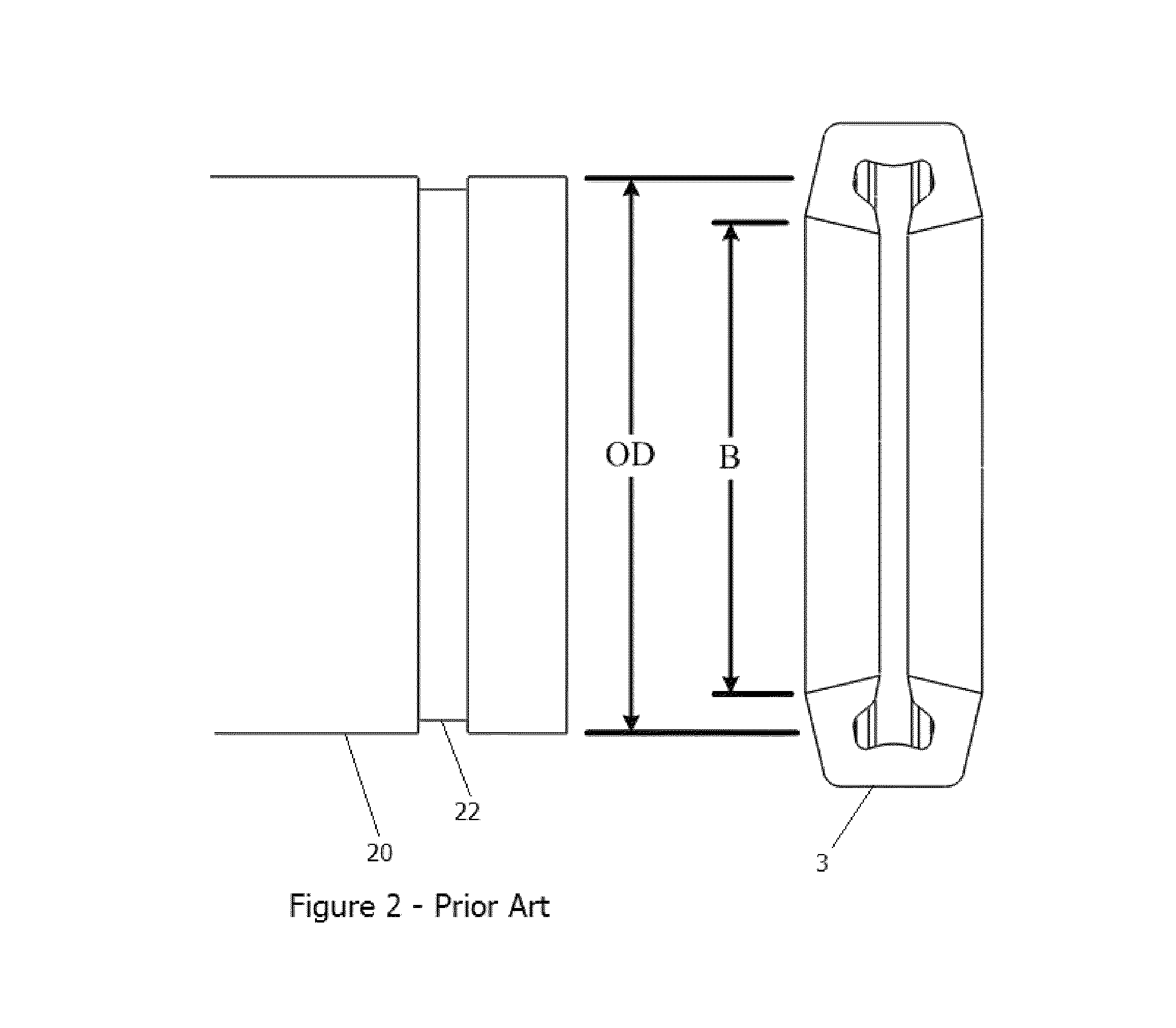4-way compression grooved coupling
a grooved coupling and compression technology, applied in the field of pipe joints, can solve problems such as reducing sealing capability, and achieve the effect of effectively eliminating longitudinal, angular and rotational movement of pipe ends, and improving installation efficiency
- Summary
- Abstract
- Description
- Claims
- Application Information
AI Technical Summary
Benefits of technology
Problems solved by technology
Method used
Image
Examples
Embodiment Construction
[0037]Turning now to the drawings, the invention will be described in a preferred embodiment by reference to the numerals of the drawing figures wherein like numbers indicate like parts.
[0038]FIGS. 1 and 2 illustrate typical features of some conventional pipe couplings. Coupling 10 has upper and lower arcuate segments 1 and 2, both enclosing gasket 3, and fastened together by bolts 5 and nuts 4. Pipe 20 fitted with end grooves 22 is shown for comparison of diameters with gasket 3. Conventional pipe gasket 3, especially if provided as a one-piece gasket, has an inner diameter B that is less than the outer diameter OD of pipe 20. This has been reported to optimize sealing of gasket 3 on pipe 20. The problem is that gasket 3 must first be stretched onto the end of pipe 20, with attendant effort and risk of tearing or gouging or dropping gasket 3, and with potential insurmountable difficulty when at least one pipe end is already in a hard to reach location.
[0039]FIG. 3 shows an unconven...
PUM
| Property | Measurement | Unit |
|---|---|---|
| angle | aaaaa | aaaaa |
| angle | aaaaa | aaaaa |
| angle | aaaaa | aaaaa |
Abstract
Description
Claims
Application Information
 Login to View More
Login to View More - R&D
- Intellectual Property
- Life Sciences
- Materials
- Tech Scout
- Unparalleled Data Quality
- Higher Quality Content
- 60% Fewer Hallucinations
Browse by: Latest US Patents, China's latest patents, Technical Efficacy Thesaurus, Application Domain, Technology Topic, Popular Technical Reports.
© 2025 PatSnap. All rights reserved.Legal|Privacy policy|Modern Slavery Act Transparency Statement|Sitemap|About US| Contact US: help@patsnap.com



